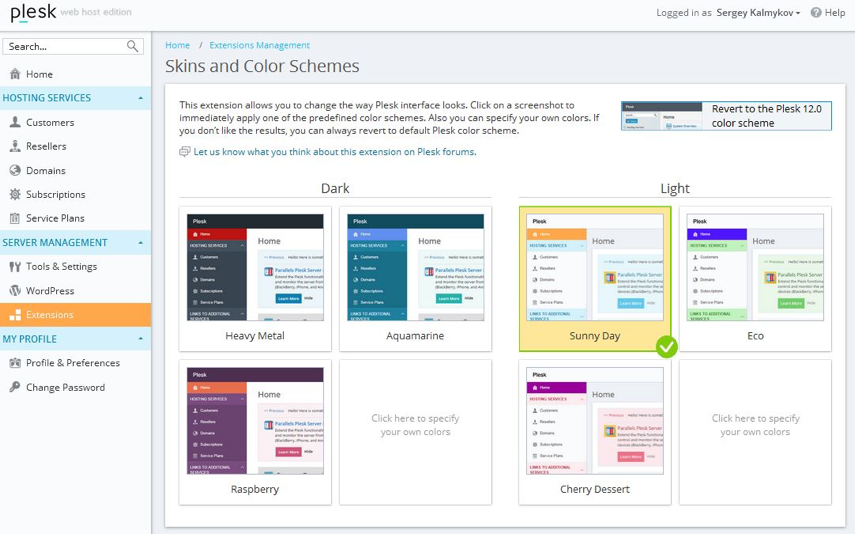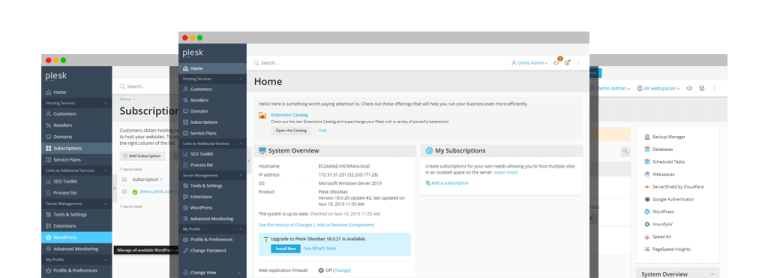

You can, of course, use WordPress with cPanel but there are more steps involved. Plesk takes care of managing plugin updates, bug fixes, and security patches for you. This extension allows WordPress users to entrust their security management to Plesk with a single click.

If like many other small business you rely on WordPress for your website, Plesk offers a great feature that you'll not find with cPanel: Plesk's WordPress Toolkit. cPanel does allow you to self-manage backups, but does not include an interface to restore system backup files. Plesk also allows you to backup domain configuration, data, and email, and offers a simple restore option. But via the Plesk control panel, you can schedule your own daily/weekly/yearly backups. If you’re a EuroDNS customer, we automatically provide regular backups for you. Other Plesk security features include: individual user accounts custom Firewall and ImunifyAV, an intelligent antivirus and monitoring tool. Plesk offers SSL installation, fail2ban intrusion prevention, email spam filters, and active directory integration. cPanel includes SSL certificate installation, password-protected directories, and brute force protection. It is possible to run Docker and Git on cPanel but you’ll be required to use more complex workarounds.īoth cPanel and Plesk emphasise security. Users can add apps to cPanel but Plesk directly offers more apps and extensions: support for Docker Git compatibility and 200,000+ images that can be launched from the control panel.

Features and toolsĪs mention before, both cPanel and Plesk provide users with all the same basic features and tools: DNS configuration, email, FTP, and database management. Because Plesk groups similar features together - and gives you the option to create your own custom groupings - you won't need to exert a lot of time or energy searching for specific options. Though cPanel's control panel is just as modern and clean as Plesk's, Plesk offers a more streamlined interface which novices will appreciated. If you don't have much familiarity with web hosting control panels, Plesk is probably the right choice for you. And this control panel is completely customisable, so you can group features anyway you want, increasing your efficiency and control.
PLESK WEB HOSTING WINDOWS
It is built to run on Linux and Windows OS. Plesk’s control panel is built to handle multiple websites without the need for an additional plugin. Plesk is equally reliable, equally user-friendly, and offers all of the same functionality as cPanel but with some important differences not available with cPanel. Plesk is another popular choice for users with simple web hosting needs. The WHM (Web Hosting Manager) add-on makes it easy to manage your multiple accounts. If you’re operating multiple websites, it is recommended that you use separate cPanel accounts.
PLESK WEB HOSTING INSTALL
It’s quick to install and easy to understand.īuilt on Linux, cPanel is typically recommended for users who prefer Windows or another operating system. cPanelĬPanel’s reputation for quality and reliability is solid. Install add-ons (WordPress, for example)ĬPanel's and Plesk's web hosting control panels allows users to perform all of these tasks.Transfer files via FTP (file transfer protocol).Manage websites, domain names, and subscriptions.Web hosting control panels offer numerous practical resources to help users administer their website hosting:


 0 kommentar(er)
0 kommentar(er)
